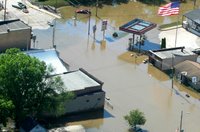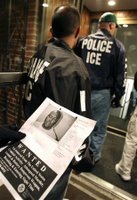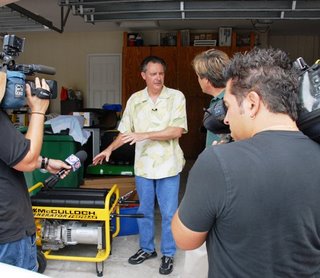CBP Laptop Searches

Our ability to inspect what is coming into the United States is central to keeping dangerous people and things from entering the country and harming the American people. One of our most important enforcement tools in this regard is our ability to search information contained in electronic devices, including laptops and other digital devices, for violations of U.S. law, including potential threats.
These searches have helped limit the movement of terrorists, individuals who support their activities, and other threats to national security. During border inspections of laptops, CBP officers have found violent jihadist material, information about cyanide and nuclear material, video clips of Improvised Explosive Devices (IEDs), pictures of high-level Al-Qaeda officials, and other material associated with people seeking to do harm to our country. For example:
- On November 14, 2006, Detroit CBP Officers inspected the baggage of an Ethiopian-born, naturalized U.S. citizen based on a law enforcement tip that he was attempting to smuggle currency into the United States. The inspection revealed approximately $79,000 in unlawful U.S. currency. CBP then reviewed his laptop computer and discovered information about cyanide and nuclear material. The individual pleaded guilty to bulk cash smuggling and making false statements. He was sentenced to twelve months in prison.
- On September 26, 2006, an individual, traveling on an F-1 student visa arrived at Minneapolis St. Paul Airport from Amsterdam. He was selected for secondary screening. A review of his laptop computer revealed numerous video clips of Improvised Explosive Devices (IEDs) being exploded. Another file on the computer showed the individual reading his will and included pictures of high-level Al-Qaida officials. Based on this and further derogatory information uncovered by computer forensics, the individual was refused admission, convicted of visa fraud, and removed from the country.
- On February 22, 2007, an individual arrived at the San Francisco International Airport seeking admission as a U.S. lawful permanent resident. CBP referred him to secondary inspection based on his behavior and questions by CBP officers. During an inspection of the individual’s laptop computer, officers discovered violent jihadist materials. This evidence led to expert testimony in immigration proceedings that identified the individual as a target for a terrorist group recruiting. His laptop was seized as evidence in this case and he is in removal proceedings.
- On December 6, 2004, a Canadian national suspected of stealing proprietary software programs from a U.S. company and attempting to sell the software to the People’s Republic of China arrived in Orlando, Florida, to attend a defense conference. ICE agents coordinated with CBP to conduct a border search of the individual and his belongings when he entered the United States. A preliminary search of his laptop revealed software belonging to the American company. On June 18, 2008, he was sentenced in the Northern District of California to two years incarceration for violations of the Economic Espionage Act and the Arms Export Control Act. He also received a $10,000 fine and 3 years probation. This joint ICE and FBI investigation was made possible by information gained by the initial CBP border search of the individual’s laptop and portable hard drive.
- And on July 17, 2005, an individual arrived at Los Angeles International Airport on a flight from Manila, Philippines. He was selected for a secondary examination and exhibited nervous behavior when questioned about the purpose of travel to Manila. After failing to provide consistent answers about his occupation and purpose of travel, a declaration was obtained and the individual’s luggage was inspected. Upon inspection of his laptop and CDs found in the individual’s luggage, officers found images of child pornography.
Moreover, CBP officers adhere to strict constitutional and statutory requirements, including the Trade Secrets Act, which explicitly forbids federal employees from disclosing, without lawful authority, business confidential information they may access as part of their official duties. We also protect information that may be uncovered during examination as well as private information that is not in violation of any law.
We have a responsibility to ensure that any item brought into the country complies with the law and is not a threat to the American public. To treat our inspections of digital media at the border differently from any other documents or conveyances would give terrorists and criminals an advantage they should not have and that our nation cannot afford.
Jayson Ahern
Deputy Commissioner, U.S. Customs and Border Protection
Labels: CBP, travel security











